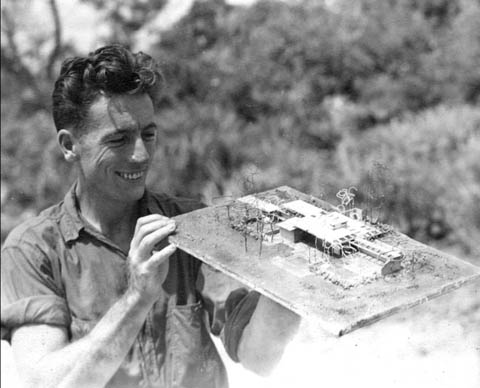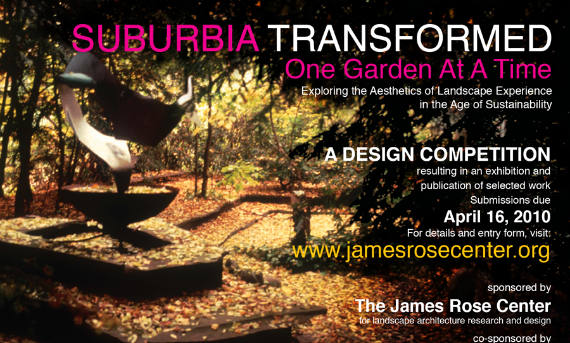 [James Rose displaying a scrap model]
[James Rose displaying a scrap model]
The James Rose Center has announced a competition titled Suburbia Transformed, One Garden at a Time, an assemblage of landscape architecture projects that exemplify Rose's modus operandi of combining economical, site efficient, and ecological approaches with a modern aesthetic. Rose termed his designs, "Space-Sculptures-with-Shelters."
For most, James Rose is remembered as one of three Harvard Students who rebelled against their Beaux Arts training in the 1930s, helping to usher landscape architecture—kicking and screaming—into the modern era. Yet somewhere after Harvard and well into the real world, Rose lost any faith he may have had in the modern planning and design professions he had helped to inspire. By the mid 1950s he had retreated from public practice and spent most of the later part of his career designing private gardens that were in direct contrast to the environmental excesses and cultural banality of the contemporary post-WWII suburbanization he saw all around him.
These built critiques were made with found objects, recycled, left-over materials, native plants and whatever he could scavenge from the sites themselves. He called them “space-sculptures-with-shelters,” and they reflected the creative, spatial and artistic nature of the garden in ways that were greener, more economical and less wasteful of resources. In doing so, Rose incorporated a conservation ethic into a modern design aesthetic, skillfully choreographing outdoor spatial experiences that inspire us to better perceive our relationship to the environment. Today, in the age of sustainability, it is equally, if not more, important to consider contemporary green technologies within the context of the aesthetics of human landscape experience.
Through a juried competition, Suburbia Transformed, One Garden at a Time will assemble contemporary projects achieving this goal into an exhibition and catalogue. The emphasis is on how emerging sustainable strategies and tactics are used to create human landscape experiences that are beautiful, inspiring, perhaps profound; and which might serve as examples for transforming the suburban residential fabric, one garden at a time.
Find more about the competion and entry info here.

